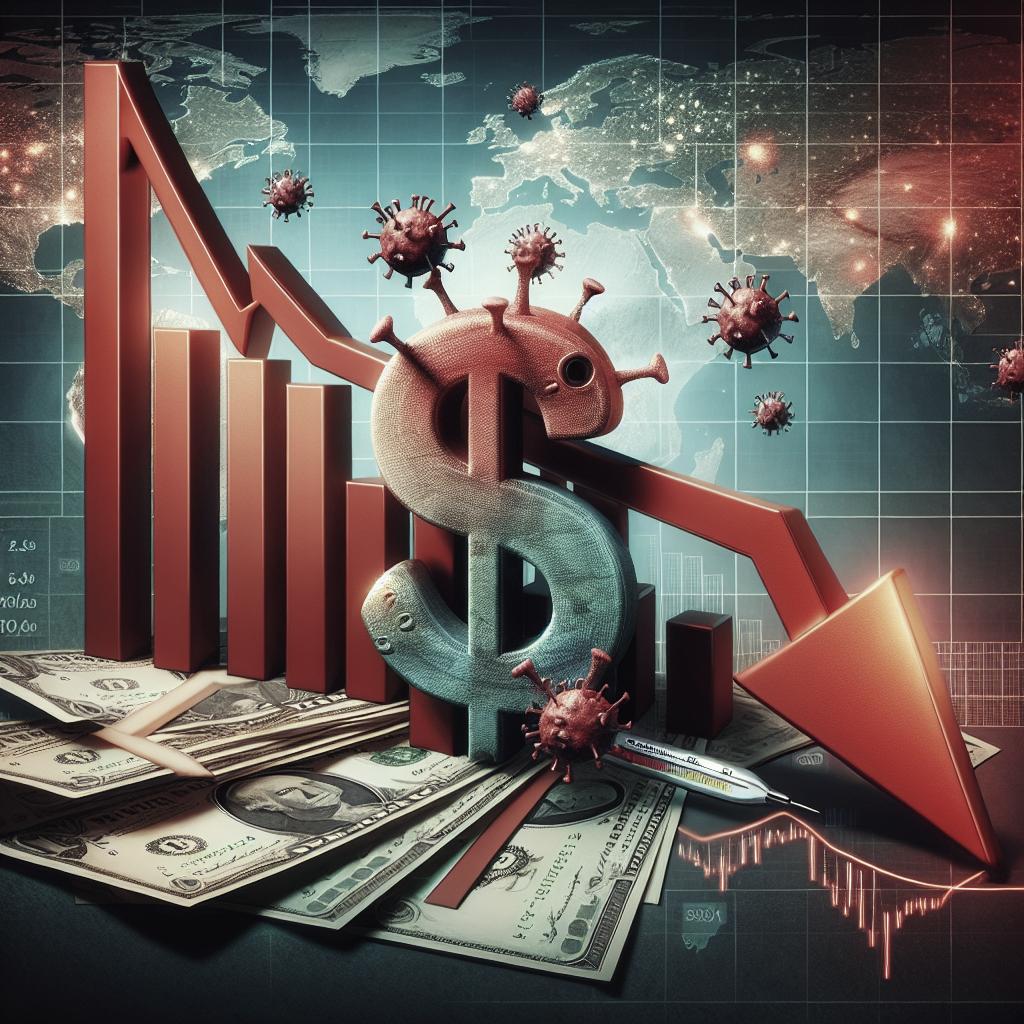Exploring the Economic Impact of Pandemics
The sudden rise of pandemics can radically alter the economic landscape across the globe. In this blog post, we journey through the multifaceted impact of pandemics—from their immediate economic repercussions to long-term global inequalities. We will delve into the short-term responses by governments, analyze the interconnected nature of modern economies, and discuss measurable impacts. The blog will particularly focus on the economic sequelae of COVID-19, highlighting government interventions and strategies for financial preparedness. As we look at the economic relief measures for COVID-19, we will also project the future course of the U.S. economy. By unraveling key statistics and practical strategies, this exploration aims to fortify your understanding of pandemics’ profound economic impacts. Finally, through an HTML table, we summarize these insights for easy reference.
Worsening Inequality Within and Across Countries
Pandemics exacerbate existing inequalities, disproportionately affecting developing nations with limited resources. In wealthier countries, the economic fallout is typically mitigated through robust healthcare and social safety nets, leaving poorer countries grappling with both health and economic crises. These gaps are further widened by unequal access to vaccines and treatments, which are vital to economic recovery.
Within a single country, the economic divide often becomes more pronounced. Those in low-income jobs are less likely to work from home and more susceptible to layoffs, thus facing greater economic insecurity. This results in increased reliance on government support, which may not be adequate for all in need.
The Short-Term Government Responses to the Crisis
In the wake of a pandemic, governments typically implement a range of short-term measures to stabilize economies. These can include fiscal stimulus packages, direct financial aid to citizens, and support for industries severely affected. For instance, during COVID-19, many governments around the world introduced unprecedented stimulus measures to sustain their economies.
Such interventions, while providing immediate relief, can lead to increased national debts and long-term economic ramifications. It’s a delicate balancing act between immediate economic support and maintaining fiscal responsibility, influencing not just economies but political landscapes globally.
The Interconnected Economy
The modern economy is an intricate web, with global supply chains making nations interdependent like never before. Pandemics disrupt this interconnectedness, causing bottlenecks that lead to larger systemic issues such as inflation and shortage of goods. The COVID-19 pandemic has shown how a single disruption can cascade through the global economy.
This interconnectedness also means that economic recovery from a pandemic must be a collective global effort. The success or failure of individual countries to manage the pandemic impacts can have far-reaching repercussions on global trade and economics.
Measuring the Effect of a Pandemic
Measuring the economic effect of a pandemic involves looking at multiple indicators such as GDP, unemployment rates, and trade volumes. The visibility of these effects varies; while some are immediate, others like long-term unemployment or decreased growth rates manifest over time.
Economists also use advanced models to project future impacts. These involve a mix of quantitative data and qualitative insights to predict the economic trajectory post-pandemic, helping to shape policy and business responses.
The Economic Impact of COVID-19
The COVID-19 pandemic has been unparalleled in its reach and economic impact, causing significant shifts in global labor markets and trade. Many businesses, particularly small enterprises, faced closures or severe losses, while others in sectors like tech and e-commerce witnessed explosive growth.
Inflation, changes in employment patterns, and shifts in consumer behavior have created a complex economic landscape that is still evolving. Understanding these changes is vital as countries navigate recovery.
The Role of Government Intervention
Government interventions play a crucial role in mitigating the economic fallout of pandemics. Their responses can shape the speed and sustainability of recovery. Effective measures include strategic fiscal policies, investment in healthcare, and initiatives encouraging economic diversification.
For instance, the rapid development and distribution of vaccines for COVID-19 were largely supported by government funding, illustrating how intervention can lead to positive economic and health outcomes.
Preparing Yourself Financially
Financial preparedness is a vital personal strategy for dealing with the uncertainties posed by pandemics. Establishing a robust emergency fund, reassessing expenditure and investments, and diversifying income streams can help cushion the blow of economic disruptions.
Continually updating financial plans in line with economic developments can also help individuals and businesses stay resilient in the face of future pandemics.
What Has Been the Economic Impact of the COVID-19 Pandemic?
The COVID-19 pandemic led to unprecedented economic challenges, initially plunging many economies into recession. Its impact touched every industry, with tourism and hospitality experiencing severe downturns, while healthcare and digital industries saw immense growth.
Consumer confidence took a hit, and supply chains were disrupted worldwide. Yet, the pandemic also spurred innovations and new business models, hinting at a transformative economic future.
What Is the Economic Relief Payment for the COVID-19 Pandemic?
Economic relief payments were a critical tool used by many governments to provide financial assistance to citizens during the COVID-19 pandemic. These payments aimed at alleviating the economic burden by supporting households, sustaining consumption, and stabilizing the economy.
In the U.S., these have included direct stimulus checks, expanded unemployment benefits, and small business loans. Such measures were pivotal in preventing a steeper economic decline and fostering a gradual recovery.
How Will the U.S. Economy Fare in 2022?
The U.S. economy in 2022 was expected to continue recovery with a focus on combating inflation and ensuring sustainable growth. The labor market showed signs of improvement, although challenges persisted with supply chains and geopolitical tensions.
Policymakers are tasked with balancing growth with inflation control, a challenge compounded by lingering pandemic effects and global economic uncertainties.
The Bottom Line
Key Takeaways
Pandemics have a significant economic impact, exacerbating inequalities, and requiring robust governmental and individual responses.
50.3 Million
This statistic highlights the number of unemployment claims filed in the early months of the COVID-19 pandemic, underscoring the immediate economic impact on employment.
Build Up Your Emergency Fund
Strengthen your financial resilience by establishing or increasing your emergency fund. Preparedness is key to weathering economic disruptions.
Dust Off Your Resume
Be ready for new opportunities by updating your resume and skillset, keeping pace with market demands and shifts.
Seek Financial Relief
Explore available financial relief options, such as government aid or community support programs, to ease financial pressures during pandemics.
Future Prospects
| Topic | Summary |
|---|---|
| Worsening Inequality | Pandemics intensify economic inequalities both globally and within nations. |
| Government Responses | Short-term interventions stabilize but may lead to long-term economic challenges. |
| Interconnected Economy | Pandemics disrupt global supply chains necessitating collective recovery efforts. |
| Measuring Impact | Economic effects are gauged through GDP, unemployment, and trade indicators. |
| COVID-19 Impact | Significant disruptions were seen, but innovation provided paths to transformation. |
| Government Intervention | Effective policies are critical for fostering recovery and economic transformation. |
| Preparing Financially | Individuals can build resilience by strengthening financial strategies and readiness. |


